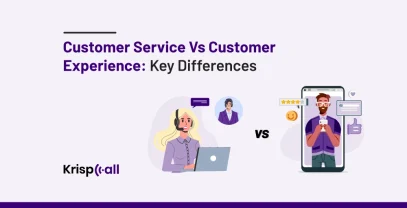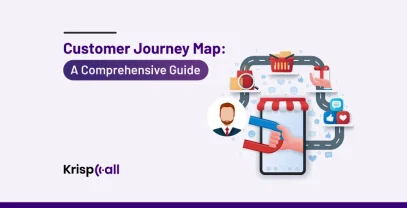Customer Relationship Management (CRM) is the fastest-growing software in the business landscape. Studies show that 92% of businesses have achieved their revenue goals🎯 using CRM software, and 74% of companies have improved their access to customer data.
CRM software has increased business revenue by understanding customer preferences and behaviors, managing leads efficiently, and optimizing sales processes. However, the CRM landscape is constantly evolving to meet market demands and changing customer preferences.
To stay competitive, businesses should follow✔️ CRM strategies, adapting their trends and technologies accordingly.
In this article, we’ll explore the top 15 CRM trends for 2024 and discover how they’re transforming the way businesses engage with their customers.
😎 KEY HIGHLIGHTS
- Businesses are increasingly adopting AI-powered CRM solutions to understand customers better, automate tasks, and provide personalized experiences.
- Blockchain transforms CRM data security by decentralizing and enhancing transparency, making it harder for hackers to access customer information and building trust with customers.
- AR and VR revolutionize customer engagement by enabling virtual product trials, enhancing shopping experiences, and minimizing return rates.
- CRM developers prioritize cybersecurity to protect user data, while hybrid solutions offer flexibility, and sustainability efforts aim to meet eco-friendly demands and improve reputation.
- Wearable tech transforms CRM interactions, offering valuable insights despite challenges, while omnichannel integration and IoT data drive personalized customer experiences.
Top 15 CRM Development Trends to Watch & Follow in 2024
1. Growing Demand for AI-driven CRM Solutions
In today’s digital world, AI-powered CRM solutions are in high demand. Businesses are using them to understand customers better and automate tasks. By using machine learning, CRM developers are making systems that are easier to use and help manage customer relationships more efficiently.
According to the Forbes Advisor survey, businesses are using AI in different ways. They found that 56% use AI to improve their operations, and 51% use it to stay safe🛡️ from cyber threats and fraud.
Also, 47% use AI, like digital helpers, and 46% use it to manage customer relationships. Moreover, 40% use AI to keep track of their inventory, and 35% use it to create content. They also use AI for suggesting products (33%), handling money🤑 and managing supply chains (30% each), finding new employees (26%), and understanding their audience better (24%).

This shift to AI-driven CRM is crucial for businesses to stay competitive. With AI, they can analyze a lot of customer data to find valuable insights and automate repetitive tasks, saving time and effort.
Moreover, AI-powered CRM can predict🤔 customer needs and behaviors. This helps businesses provide personalized experiences, build stronger customer relationships, and grow.
2. Integrating Blockchain into CRM Systems
Keeping customer data safe is really important in CRM, as businesses handle sensitive information. However, regular ways of protecting data have some issues🚩 with transparency and trust. That’s where blockchain technology comes in.
Blockchain is changing how businesses deal with data security in CRM. It’s decentralized and transparent, which means it’s transforming how businesses approach data security.
By spreading out where customer data is stored, blockchain makes it harder for hackers to break in and steal information. Plus, its transparency lets customers see exactly how their data is being used, which builds trust🤝 between businesses and their customers.
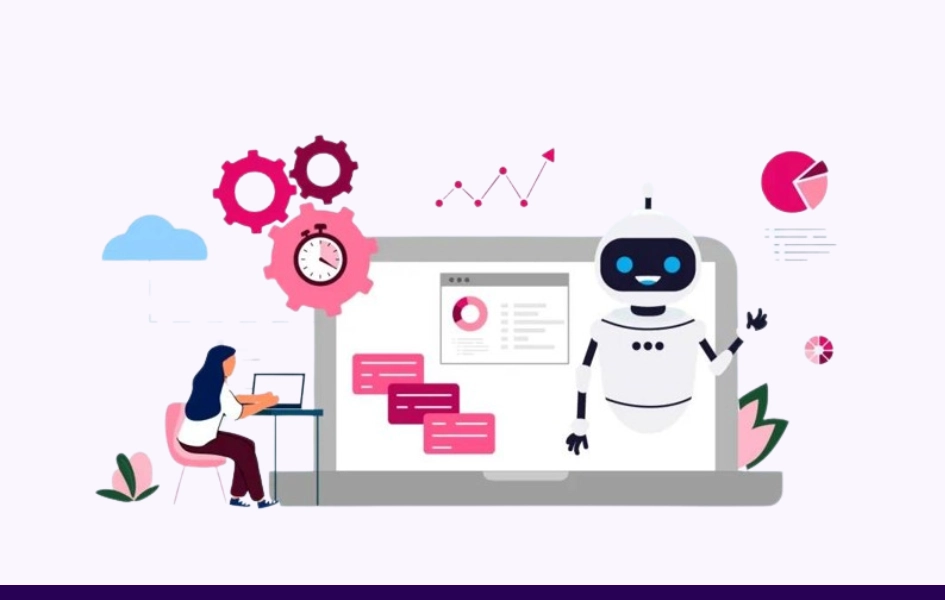
This new way of protecting data not only deals with worries about data privacy but also makes customers feel more confident in how businesses handle their personal information.
Given all this, it’s no surprise that 72% of sellers are using CRM systems, with the industry expected to reach $80 billion by 2025. Also, 90% of governments want to invest in blockchain, and about half of businesses prefer controlled access to ensure privacy.
3. Continuing with Cloud-Based Advanced CRM Solutions
Continuing to use cloud-based☁️ systems is a big deal in the CRM industry because they’re easy to use and can grow with your business.
One of the best things about cloud-based CRM solutions is that you can access your CRM data from anywhere in the world🌍. This means your team can work together no matter where they are.
Another great thing about these solutions is that they often have backup systems. This means your data is regularly saved to secure cloud servers, making you less likely to lose anything if something unexpected happens.
Plus, cloud-based CRM solutions come with other benefits too, like automatic updates, extra security, and the ability to expand as your business grows. Using cloud-based CRM systems helps businesses stay efficient, productive, and prepared for whatever comes their way.
By 2025, the CRM industry is expected to make over $80 billion in revenue💰 as more businesses boost their IT spending and switch from on-premises systems.
4. Influence of Voice Technology in CRM
Voice-activated CRM systems are gaining popularity🔥 because they provide a convenient way to interact with customer data. Instead of typing, users can simply use their voice to perform tasks like retrieving information or updating records, making the CRM experience easier and faster.

The use of voice technology🔊 enhances user experience by offering a hands-free approach to CRM interaction. Users can navigate through the system effortlessly, issuing commands and queries naturally.
Moreover, these systems ensure that everyone can effectively use the platform by providing an alternative input method, making it accessible to individuals with different needs, such as mobility or vision impairments.
Overall, the adoption of voice-activated CRM systems represents a significant advancement in technology. It promises to make CRM interaction more efficient, intuitive, and inclusive for all users.
5. AR and VR Changing Customer Interaction
Augmented Reality (AR) and Virtual Reality (VR) aren’t just for games🎮 anymore; they’re changing how businesses connect with customers in CRM. Businesses are using AR and VR to create cool experiences where customers can try out products and services in virtual worlds.
The AR and VR industry was valued at $26.7 billion in 2018, and it is expected to skyrocket🚀 at a 63% growth rate, reaching an estimated $814.7 billion by 2025.
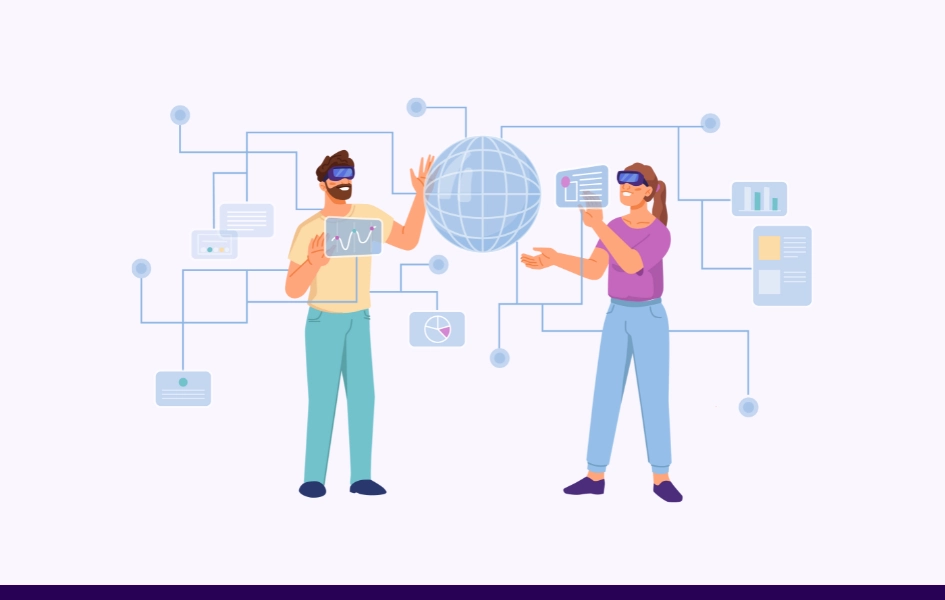
With AR and VR, customers can see how things would look and work in real life without actually being there. For example, they can virtually try on clothes or see how furniture would fit in their home.
One way businesses use AR and VR is for virtual product trials. Customers can try products before buying them, which makes shopping🛒 more fun and reduces returns. Plus, AR and VR let businesses offer help and support from anywhere, which is super handy.
Using AR and VR in CRM opens up many exciting possibilities for businesses to create fun and interactive customer experiences, leading to happier customers who keep coming back.
6. Using Edge Computing in CRM
The global edge computing market is set to grow significantly in the coming years. It’s expected to increase💹 from $4.9 billion in 2020 to $15.7 billion by 2025, growing at a rate of 28.5% annually. This growth is driven by the rising use of IoT devices, which require fast data processing and analysis.
This growth in edge computing is changing how CRM systems work. Instead of processing data in centralized locations, they now do it closer to where the data is created. This means less waiting time, faster analytics, and overall better performance for CRM systems.
Edge computing brings data processing closer to where it’s needed, which helps reduce delays and improve✅ user experiences. It also makes better use of network resources by only sending relevant data to central servers, which reduces congestion and boosts performance. This is especially helpful in situations where lots of data is generated quickly, like in IoT setups or during busy times.
By focusing more on edge computing, CRM developers are meeting the growing demands of a connected world. This approach ensures that CRM systems can handle real-time data needs and keep up with the changing requirements of businesses and their customers.
7. Prioritizing Cybersecurity in CRM
As people worry more about keeping data safe, cybersecurity has become a critical part of CRM development. Strong security🔒 measures are now being implemented to keep user data safe, and CRM developers are working hard to ensure that customer information stays secure.
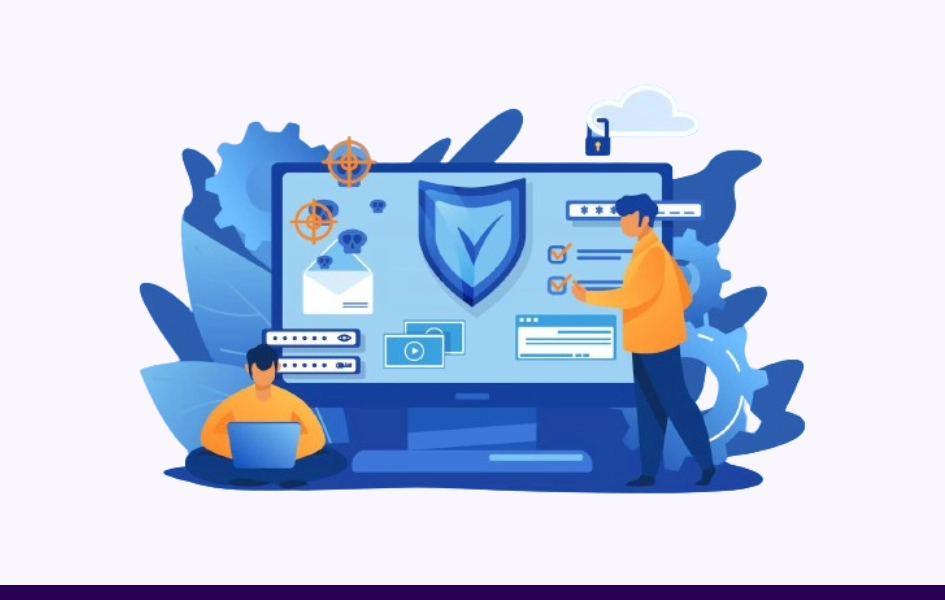
They do this by adding encryption and authentication protocols to CRM platforms. By focusing on cybersecurity, CRM developers aim to prevent data breaches and unauthorized access.
This helps build trust and confidence among users, showing a commitment to protecting sensitive customer information and maintaining privacy standards in CRM operations.
8. Increasing Use of Hybrid CRM Solutions
Many businesses struggle with deciding between cloud-based and on-premise CRM solutions. Cloud-based systems offer flexibility, while on-premise solutions provide more control over data security. However, finding the right balance can be tough.
Hybrid CRM solutions combine features from both cloud-based and on-premise models. This allows businesses to enjoy🤩 the benefits of each while meeting their unique needs. For example, sensitive data can be kept on-premise for security, while less critical information can be stored in the cloud for accessibility.
According to SuperOffice, CRM software has surpassed database management systems to become the largest software market and is expected to reach over $80 billion by 2025, making it the fastest-growing software market.
As technology progresses, more industries are using hybrid CRM solutions. These solutions provide the flexibility needed to customize CRM strategies and effectively meet specific business requirements.
9. Focus on Sustainable Development in CRM
As businesses focus more on being environmentally friendly, CRM development is changing, too. Companies are now making CRM systems more eco-friendly♻️ by using better practices for the planet.
This can include using less energy, creating less waste, and being careful about how systems are made. It might also involve using renewable energy and materials that are better for the environment. Customers care more about eco-friendly businesses, so making CRM systems green can give a company an advantage.
According to a survey, 9 out of 10 entrepreneurs think sustainability is crucial for business success, and 73% believe economic growth↗️ should be separated from harming the environment.
Basically, making CRM systems eco-friendly means using practices that are better for the planet, which makes customers happier and improves a company’s reputation.
10. Exploring Wearable Technology’s Role in CRM
Wearable technology, like smartwatches⌚ and fitness trackers, is transforming how we interact with CRM systems. It provides real-time data and insights, giving businesses a deeper understanding of customer behavior. By integrating this wearable data into CRM systems, companies can tailor their marketing and customer service strategies more effectively.

Wearable CRM offers exciting opportunities but also poses challenges like data privacy, compatibility issues, and the need for advanced analytics. Despite these challenges, the potential for innovation and improved customer engagement makes wearable CRM a trend worth watching👀.
As wearable technology becomes more widespread, its market value is predicted to reach $74 billion by 2025. Therefore, businesses should stay informed about developments in wearable CRM to remain competitive and meet their customers’ evolving needs.
11. Bringing all channels together with Omnichannel Integration
Omni-channel communication is emerging as a significant trend in CRM organizations. This trend involves integrating diverse communication channels such as email, social media, and chat directly into CRM platforms.
When brands use these channels, they see a 9.5% yearly increase in annual revenue💵 compared to 3.4% for those who use single channels.
Furthermore, compared to single-channel strategies, it can boost order rates by 494% and increase customer purchase frequency by 250%.
By integrating various channels, businesses aim to simplify customer interactions and ensure consistency and personalization across touchpoints. This shift highlights a focus on customer-centric solutions in CRM organizations.
12. Using insights from IoT devices
In today’s business world, data is vital, and utilizing IoT data offers valuable insights into genuine customer behavior patterns. By accessing real-time, detailed data from IoT devices, businesses can establish secure and effective customer experiences.
It’s crucial to integrate IoT-driven data insights with CRM strategies. This ensures that businesses can communicate💬 with customers at the right time and with the right information.
This combination enables companies to personalize interactions based on up-to-the-minute insights, resulting in improved customer engagement and satisfaction.
13. Making CRM accessible on mobile devices
Making CRM accessible on mobile devices allows users to manage customer data conveniently anywhere, anytime. This is particularly helpful for professionals who regularly engage with clients and need quick access to important information.
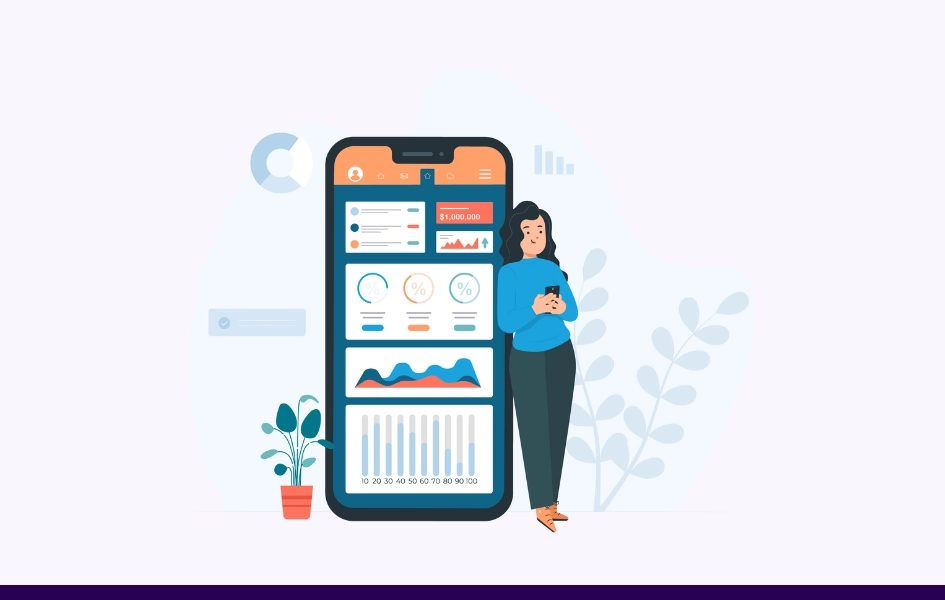
Whether they’re on the move or in meetings, mobile CRM apps let users update records📝 and access essential customer details instantly.
It’s like having a pocket-sized database, ensuring users always have the latest information on hand to support their work.
14. Low-code no-code development
Low-code no-code development is changing how CRM systems operate. These platforms let users customize CRM applications with minimal coding, making it easier for businesses to personalize their systems without relying heavily on IT or traditional software development.
But while this makes CRM more adaptable and innovative, it also requires proper management. Companies need clear rules to ensure the security, compliance, and scalability of these new CRM solutions.
This way, they can enjoy😃 the benefits of fast development and customization without taking on unnecessary risks.
15. Incorporating social media into CRM strategies
Businesses are bringing social media into their CRM strategies to understand and connect with customers better.
By adding social media data to CRM systems, companies can personalize interactions, improve customer support, track marketing success, and communicate easily. But it’s important to plan carefully and follow data rules.
Overall, using social media in CRM helps businesses build stronger customer relationships and provide better experiences in today’s digital world.
Wrapping Up…
As we look forward to the years after 2024 and beyond, the top CRM development trends are clearly bringing significant changes😍.
Businesses need to embrace trends like AI integration, the potential of blockchain, and the focus🔎 on sustainability to stay competitive. The future of CRM development looks bright, promising exceptional customer experiences and innovative solutions.
With KrispCall’s CRM integrations, you can easily connect your cloud phone system to your current CRM software. This lets you automate all aspects of customer interactions for better efficiency. KrispCall also works with other business tools like Slack, HubSpot, Salesforce, and Pipedrive, boosting workflow and team productivity. Plus, you’ll get valuable💎 insights into your team’s performance and customer behavior.
Try KrispCall’s CRM phone system today and make the most of your cloud phone!
FAQ
What is the future of CRM in 2024?
The future of CRM (Customer Relationship Management) involves more personalized customer experiences, increased use of AI and automation to streamline processes, and a focus on ethical data practices to ensure customer privacy and trust.
What is the number 1 CRM in the world?
The number one CRM in the world varies depending on factors such as market share, user satisfaction, and specific business needs.
What is the future of the CRM industry?
In the coming years, the CRM industry will evolve to incorporate emerging technologies, focus on personalized customer experiences, and prioritize sustainability and ethical data practices.
What is CRM in the current scenario?
In the current scenario, CRM (Customer Relationship Management) refers to software and strategies businesses use to manage customer interactions and relationships. It involves organizing customer data, tracking interactions, and improving customer service to enhance customer satisfaction and loyalty.



